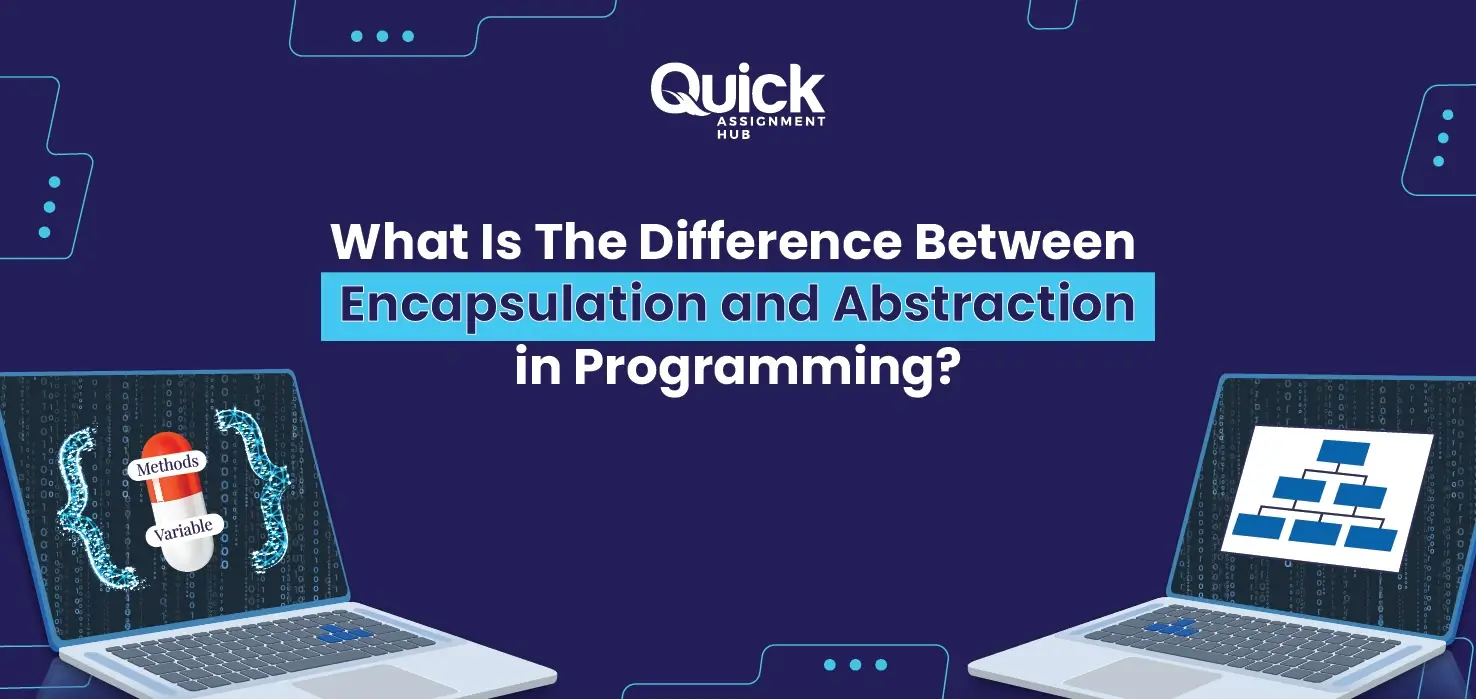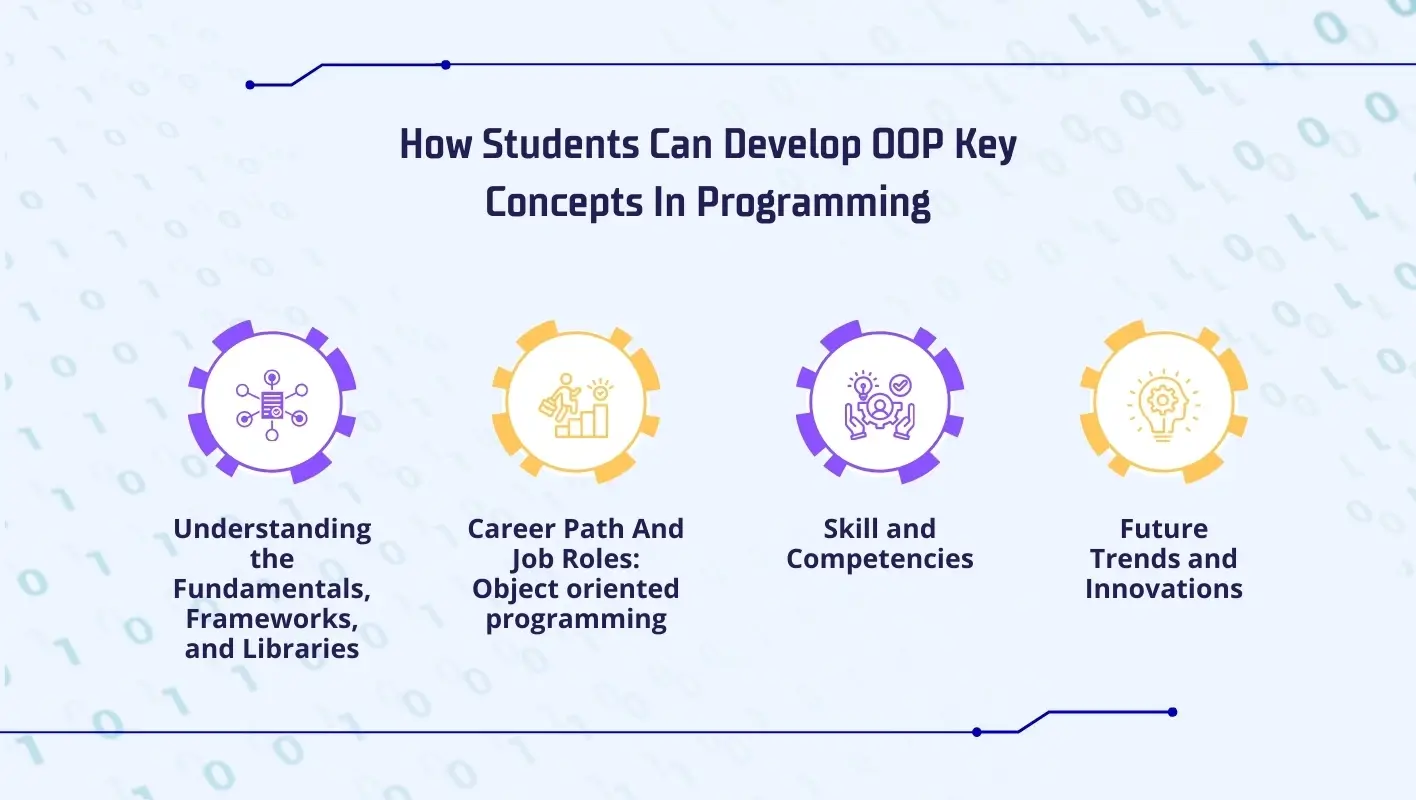Larger the Assignment, Bigger the Savings For Your Pocket!

Developers need to understand the significance of maintaining and developing clean code. Students need to know the basics of object-oriented programming to create a quality application in the software industry. Encapsulation and abstraction are the two key concepts in programming that enhance security and simplify complex programs. Encapsulation in programming provides clear security to data, helping improve application performance. Abstraction in programming enhances software applications and reduces their complexity. Both are used to improve the efficacy and performance of business applications.
Students need to understand the importance of OOP concepts. In the future, object-oriented programming will be necessary for any other field to run its work correctly. Programming is the key for all types of industries. Hence, Students should learn the programming beforehand and understand the key concepts. Let's discuss the key concepts and significant differences between Encapsulation and abstraction in OOP and how it helps students achieve a better career in the software industry with some real-time cases in detail.
Object oriented programming or OOP refers to a language that uses objects in its coding. The main aim is to implement inheritance, encapsulation, polymorphism and abstraction in real-world applications. All these elements are key parts of programming. The ultimate goal of OOP is to bind the data and functions together and to operate them. Once the process is done, other parts will care how to access data and function in coding. Let's drive in detail the essential elements of OOP.
is a mechanism that binds data and code together. Generally, in encapsulation, a class's variables or data are hidden from other classes. If any member function needs to access data, it is only accessed by certain member functions of the class already declared. Other classes hide data in the class, which is why it is called data binding. Simply put, encapsulation in programming is accessing hidden data by a particular member function.
Example: In a company, a marketing and sales team are running. Both data are secured, and no one can access them. If a sales team needs marketing team data, they cannot access it directly. A marketing team member only accesses data and can hand it over to an analytics team that processes encapsulation. Are data hidden, but can only certain member functions get data in class?
Data abstraction in programming is one of the essential features of OOP. It refers to providing crucial information outside the function without mentioning the background details or implementations.
Example: In a simple example, when working on a computer, the user gives input, and the system provides a clear output, but the user doesn't know how the inner function gains output. This implies the key concept of abstraction. It doesn't share inner information but is a required output in Object oriented programming.
It helps to make the development and maintenance of software projects effortless.
It offers a unique feature called data hiding, which improves the application's security.
Real-time application problems can be solved using the OOP, and code reusability can be ensured during development.
It helps to avoid the repeatability of code in programming.
The above OOP concept pointers will help students understand the encapsulation meaning in programming and how it works in the development process.
Your First Order
Get 20% OFF!
The key difference between encapsulation meaning in programming and abstraction in OOP. Explore the detailed discussion about both.
| Parameter | Encapsulation | Abstraction |
|---|---|---|
| Process | It is a process or method that stores data in a function that helps secure a large amount of information. In a better way, Encapsulation is a process of enclosing data results and manipulating it into a single unit so that internal information can be hidden from outside view. | Its process or method that obtains the information. It helps to simplify complex data into simpler ones. In detail, abstraction is a process that identifies the complex set of data and general considerations under the objects. |
| Definition | Data encapsulation is a way of hiding data in a single entity and helps to protect data from the outside world that couldn't be accessed without a specific function. | Abstraction in Programming is the process of offering crucial information to the user end without any persimmon in function, and it shares vital information and hides unnecessary information. |
| Problem-solving | During the encapsulation in programming, the issues are mostly resolved at the implementation end. | In abstraction, the problems are resolved at the design process or the interface stage. |
| Focus | The main focus of encapsulation is how access is gained from a specific function or class. how the process is done. | In Abstraction, what does the process need to do, what process need to offer when the user provides input. |
| Implementation | Encapsulation in programming can be implemented using the access modifiers; code should be implemented in public, private, and protected stages to secure inner data information from the other end. | This method uses abstract classes and interfaces to implement the functions. When the user provides an input that abstraction interfaces with specific functions, the ad provides an output. |
| Access | It hides data from direct access, also called data hiding in programming. | Abstraction allows access to data with required information. It is called data biding in programming. |
| Applications | The critical encapsulation applications in OOP programming are mobile devices and Facebook access. Both have user access but do not know the internal process. Encapsulation provides encrypted security to real-time applications to secure user data. | The real-time applications for abstraction hide the bank details and secure mobile passwords. The data abstraction role in OOP programming is gathering data from the public end; users' passwords are open to databases. Corporate companies may miss this for various purposes, but abstraction plays a significant role in hiding and managing those passwords in particular data sets. |
This is a basic use case that developers use in multiple programs.
Client-server system
Object-oriented databases
Simulation and modelling system
Office Automation and E-commerce systems
Object oriented programming (OOP) is an essential language for building modern software applications. Understanding the basic concepts of OOP helps students develop their coding skills and build realistic applications for multiple software business environments. We will explore OOP's needs, career paths, and future trends here.

Students need to learn the basic concepts of OOP, such as inheritance, encapsulation, abstraction, and polymorphism. However, they must also understand frameworks and libraries and how to use this OOP concept in multiple programming languages, such as C, C++, Python, and Java. Best practices in writing code help students debug, comment on, and test code clearly and concisely.
Object oriented programming skills will bring a lot of career paths and job roles for students. Depending upon their interests, goals and experiences, students can pursue their path in the development process. Opportunities like Software engineers, software architects, and software testers help develop, maintain, and est the code in OOP applications. Most students work from a complete software development life cycle.
Students need to enhance their skills and competence in OOP to attain better opportunities or career roles. They must showcase their OOP skills on various platforms, work on different projects, or join programming communities or open-source platforms. I need to improve my skills to pursue a career path. Quick Assignment Hub is the right place for students to learn and improve their skills in OOP concepts.
Students should follow OOP podcasts, online website blogs, and newsletters to learn about future trends and innovations. A recent trend is that IoT combines object-oriented programming concepts to ensure data security and integrates fundamental programming like Scala and Python to improve applications' power and performance.
Expert guidance: We have experts with a lot of experience working on OOP assignments for many years. Students can get appropriate guidance for their OOP assignment, which helps them understand the basics and clear doubts about OOP concepts.
Complex programs: Our experts are trained to work on complex OOP assignments. Our team has enough skills to solve complex OOP assignments for students and help them complete the tasks on time.
In the end, Both Encapsulation in programming and abstraction are used to improve the performance and security of data software applications. Understanding and learning the OOP concepts helps students gain skills in application development. Learning its fundamentals, key concepts, and frameworks helps students gain a bright career path in the development process. This difference between encapsulation and abstraction helps students understand the key functionalities of object oriented programming. Many future trends and multiple software architects and SDLC roles are available for students to pursue careers in software development and help students switch jobs in the development process.
If you are a student looking for OOP assignment help services, Quick Assignment Hub is the right place to seek assignment help. Our experts will offer proper guidance to help you complete the assignments and develop a better career in software development.